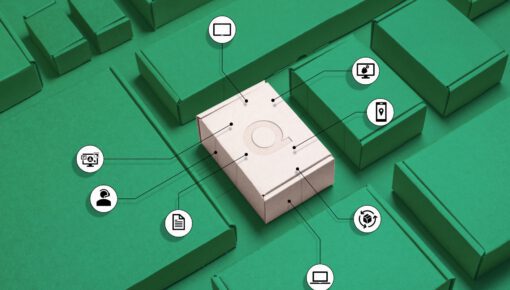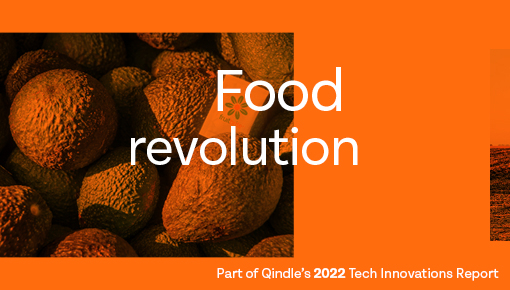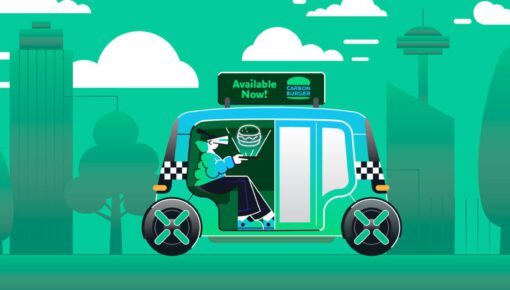Sustainable Packaging, the only way
From the shopping to the unboxing experience, packaging is a key element for a brand to connect with its consumers. Packaging is the most important extension of a product contributing to brand awareness and experience, and it drives sales. But these days, consumers are demanding more than just an experience, they also want their favourite brands to take responsibility and commit to sustainable packaging.
In fact, according to the 2021 Global Buying Green Report, 67% of consumers find packaging’s recyclability a key factor of purchase. 83% of those under the age of 44 mentioned they are willing to pay more for sustainable packaging.
Brands are responding to this demand. Companies like Unilever, Pepsico and McDonalds have set ambitious goals for 2025 regarding the use of renewable, recyclable, compostable, or biodegradable materials in their packaging. At the same time, multinational brands like L’oreal and smaller niche companies like Monday’s Child are striving to cut on waste by designing circular packaging which can be reused or repurposed, giving the consumer a positive experience and the packaging a new life.
Furthermore, the 2020 Sustainable Market Share Index by NYU Stern found that the market for sustainable products grew 7.1 times faster than the products not marketed as sustainable.
But what is sustainable packaging?
Simply put, a sustainable package is one that, throughout its entire life journey, has the minimum possible negative impact on the environment, and ideally, the maximum possible positive impact.
According to the Sustainable Packaging Coalition, a sustainable packaging is one that:
- is sourced responsibly
- is optimised for efficiency
- is effectively recovered
- is non-toxic
- and has low impact
In design terms, this refers to all points across the supply chain:
Starting at the raw material of choice – How is it sourced? Think about deforestation, use of forced labour, payment of fair prices, etc. How is it transported? Does it need to be shipped or flown in? What is its carbon emission? But also, does it need extra packaging? How much space does it take? Or can the amount of material/space used be optimised? Does the shape help minimise extra packaging and space?
To the way it will be produced and manufactured – Is the material good enough to conserve the product? Transport and storing? Or do we need to consider using extra materials? Are these extra materials also coming from a sustainable source? Is there the right technology to manipulate the material to our desired goal?
To the way it will be eliminated or ideally reused/recycled/decomposed – will the user know how to reuse/recycle/eliminate the packaging after use? Is the infrastructure in place to facilitate the sorting of material in the city/country it will be sold? Is the recycling or decomposing process not worse than the problem?
Innovative solutions for (more) sustainable packaging are in the news every day these days, from food packaging that you can eat to boxes made from popcorn. But having fully green or eco-friendly packaging is not an easy task. It is essential, however, for both consumers and brands to understand the levels of complexity. This will allow them to make the right choices when it comes to sustainable packaging production, design, purchase, use and disposal.
“At Qindle, we see creativity and design as essential tools to support and lead the global transformation towards a sustainable future.”
Diving into the design process
As we have seen so far, the life journey of eco-friendly packaging is a complex one. And designers are forced to think about the package (and its product’s safeguard) from source to shelf and to consumer’s end-use without compromising quality, user experience, costs and others.
At Qindle, we see creativity and design as essential tools to support and lead the global transformation towards a sustainable future. We sat with Tim van Breugel, Tech Lead at Qindle, to unveil, from his experience, the challenges and opportunities for designers and brands when embarking on a journey towards more responsible solutions.
Tim, what is your first thought when a client asks for a sustainable packaging design?
“The first thing I need to understand is the client’s goal and ambition. How far are they willing to go? How committed are they? And if they understand the impact this can have on their product. Because 100% sustainable is not an easy undertaking. For instance, if we are talking about a food company, one of the most important things to consider is product conservation and flavour consistency. If a milk package does not have a liner in between the cardboard and the milk, the flavour of the milk can change. And if an organic cucumber does not have a layer protecting it, it will go bad pretty soon as organic vegetables do not have preservatives to keep them long enough on the shelves.”
“The second important aspect for brands to know before starting the journey is that designing an eco-friendly packaging is not as easy as replacing the material for a greener one. Choosing an easy-to-recycle material might mean that it does not always look the same, think about the colours of the graphics on-pack or the fact that the alternative material will not be as resistant as plastic, for instance, and therefore dents might be visible after transporting from oversees. This is especially true for high-end products, where consumers expect a certain level of quality – and why not say, shininess – and where the unpacking experience is part of the reason for purchase. And about transporting from far distances, shipping has a significant impact on the product’s footprint, but also the space it will take, and the extra measurements needed to properly protect the product, influence its green design.”
What are the most challenging aspects of designing an eco-friendly package?
“A first big challenge is deciding where to focus on. A product that is 100% sustainable sounds good, but if it is only good in a small domain or if no one desires it, is it really worth making it in the first place? Therefore, the first question the client needs to ask itself is: Where can I create the biggest impact in the complete supply chain? From the raw material, production, logistics, packaging, and product to the end-consumer. Do I focus on materials, energy, water, emissions, or waste reduction?
A second big challenge later in the process is choosing the material to use in the packaging. The material of choice will affect the complete chain, from sourcing, production, transporting to disposal. But also the fact that often, if not always, it will need complementary materials, many times as part of its composition, to make it resistant and efficient enough. Not for nothing has been plastic the go-to material for packaging. The properties of plastic are difficult to replicate, and many times, the final materials manufacturers use on the packaging are a combination of natural, highly-recyclable materials and some plastic.”
“Another important aspect to consider is how the company will measure its sustainability efforts and progress. Defining the goal and metric is important. But also, looking for a baseline or external certification can help the company measure their sustainability ROI, and the consumer clearly understands the positive impact their product of choice has.”
What about production and manufacturing? Is the technology catching up with the demand for greener solutions?
“There has been a lot of research done in the search for more sustainable solutions. However, there is still a long way to go. Scalability and mass production are difficult problems to solve. In my opinion, we are still at a niche scale when it comes to eco-friendly material production.”
“(Truly sustainable packaging)… is possible, and it is in fact, the only kind of packaging companies should be aiming for if they want to stay relevant.”
Are you saying that truly sustainable packaging is not possible?
“No, I believe it is possible, and that is what we embark on every day at Qindle, on the search for innovative solutions which will bring the clients closer to their sustainability goals. There are just more things to consider than only replacing the main material with an eco-friendlier one. And brands, as well as consumers, need to understand this. We are on a mission to find these alternatives by means of smart design and innovative solutions. It is possible, and it is, in fact, the only kind of packaging companies should be aiming for if they want to stay relevant.”
“Indeed, there are many great examples out there of innovative solutions taking into account the different aspects of responsible design and production. Hello Fresh, for instance, one of the winners of the recent Sustainability Awards 2021, uses machine learning and data to predict packaging consumption and minimises the amount of packaging the company uses. Or Oceaniq, awarded Sustainable Design Platinum during the 2021 Pentawards, is using 100% recycled fishnets from around the world and is showcasing the plants and animals they are helping protect on the pack.”
So, is it worth it for brands to move to more responsible packaging solutions?
“Committing to (more) responsible solutions, being that in packaging or in any aspect of the business proposition for that matter, is not only a smart thing to do, but it is also an essential move for brands to stay relevant nowadays. At Qindle, we see sustainable innovation as the sweet spot between social, environmental and economic factors. Besides responding to a growing demand, brands who show they care are building strong long-term relations with their (conscious) consumers, which will translate into a positive brand image and reputation. By sharing the same values, consumers can develop a more emotional connection with the brand and feel they belong to a bigger tribe or community. This will translate into loyal consumers, recurrent sales and advocacy. Furthermore, brands venturing in the eco-friendly world are challenged to be creative and innovative. Finally, from the consumer’s point of view, knowing that their new product is contributing to a better world makes the unpacking experience a complete feel-good moment.”
A note from the author:
Sustainable packaging means saving energy, emitting less CO2 to the atmosphere, protecting the eco-system where natural products are produced and harvested, reducing waste, eliminating (toxic) pollution. It also means brands and consumers alike can help tackle some of the most pressing problems in the world right now, such as feeding the world population. One of the biggest problems of food security is food waste. According to the UNEP Food Waste report, every year there is an estimated 931 million tonnes of waste coming from households, retail establishments and the foodservice industry. Responsible packaging can help reduce food waste in all three levels. There is not such a thing as too little food in the world, it is just not fairly distributed and is unnecessarily wasted. Sustainable packaging can help make food available to all.



